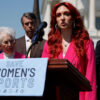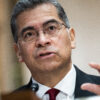Last week, The Heritage Foundation hosted a discussion entitled “Burma Policy: Hope and Reality,” which revolved around breaking developments in Burma and appropriate responses to them.
The panel for this event included Tom Malinowski, Washington director for Human Rights Watch; Aung Din, executive director of the U.S. Campaign for Burma; Jared Genser, founder and president of Freedom Now; and Walter Lohman, director of Heritage’s Asian Studies Center.
Recent events in Burma heighten this discussion’s relevance. Indeed, the 20-year debate of engagement versus sanctions has resurfaced and has been energized by a series of nominal reforms in Burma, such as the amnesty of a mere 220 political prisoners out of some 2,100 believed to be incarcerated.
This panel sought to dial down the rhetoric, rationally assess the conditions on the ground in Burma, and critically analyze their implications for genuine, sustainable reform and the appropriate policy response.
Cautious optimism, colored by a hefty dose of skepticism, dominated the event’s tone.
Lohman opened the event by highlighting that there are “recurrent themes in what’s going on in Burma” and that we need to “sit down, slow down a little bit, and see what exactly is happening and what kind of response it warrants from Washington.”
Aung Din, who was a student leader of the 1988 pro-democracy uprising in Burma and subsequently a political prisoner for four years, expressed his disappointment with the meager political prisoner amnesty in stating that “we lost hope that many of the important leaders of the [1988] movement are not being released.” He called on the U.S. to “not give any reward for the current release of political prisoners” as it was “still not enough.”
Finally, he established four important benchmarks for the Burmese government to meet, namely “releasing all political prisoners immediately and unconditionally, ending ethnic conflict, creating a political system that will allow all people to participate freely, and allowing international humanitarian agencies to deliver relief to those affected by ethnic conflict.” He concluded by stating that the Burmese regime “has not changed their behavior” and only acts when “they need something from the international community.”
Malinowski unequivocally stated that “no laws have been changed, no institutions have been reformed yet” and the “U.S. response to Burma should be determined by the facts on the ground, not on hopes…. It is important for the U.S. to maintain a sense of sobriety about this and maintain its leverage.”
Regarding the release of 220 political prisoners, he noted that “this is not an unconditional release.” He further highlighted that releasing all political prisoners “is not the same as changing laws and institutions” and that “the people went to prison because they wanted to change the way Burma is governed,” so success should be measured in terms of political reform, not prisoner amnesty.
Malinowski stressed the need for the junta government to follow through on a full release of all political prisoners, noting that expectations have been raised to expect just that, not another routine partial release. He also stressed the importance of upcoming elections and the need for the government to change the election laws in a way that allows the National League for Democracy Party to contest them. These would be important developments and would warrant a positive American response.
He added that the reforms would “vindicate the policies that the U.S. has pursued,” referring to U.S. sanctions, but he also cautiously reminded the audience that there is still “a beast of a regime” that is not going to “voluntarily negotiate its powers and privileges without a struggle.” He ended by stating that if reform happens, “it would be important for the Administration to respond in a concrete way … [but] we’re not there yet, [and] our response should be measured, sobered, and realistic.”
Finally, Genser noted the need “to step back” and assess the evidence. His conclusion was that “an analysis of those items where people are pointing to potential progress are, in fact, so far mostly illusory, particularly when you put this in the context of recent Burmese history.”
He discussed 10 specific areas where commentators perceive change—namely, the 2008 constitution, the 2010 elections, the release of Aung San Suu Kyi, the new president, the new government, the increased access to diplomatic visas, the meeting between Suu Kyi and Thein Sein, the slight lift of media restrictions, the visit by the U.N. special rapporteur on human rights, and the release of 220 political prisoners.
He described these developments as “the junta appear[ing] to be repeating history once again, offering form instead of substance,” criticizing each individual step as not containing genuine reform beneath the surface or not being particularly new. Genser concluded by warning observers that “no one should be fooled.”
The primary takeaway from this event is that it is critical to judge Burma not by its rhetoric but by its actions and that, so far, Burma has not done enough to warrant a reorientation of U.S.–Burma policy. Malinowski’s statement that “we’re not quite there yet” concisely portrays where exactly we stand in this process.


























